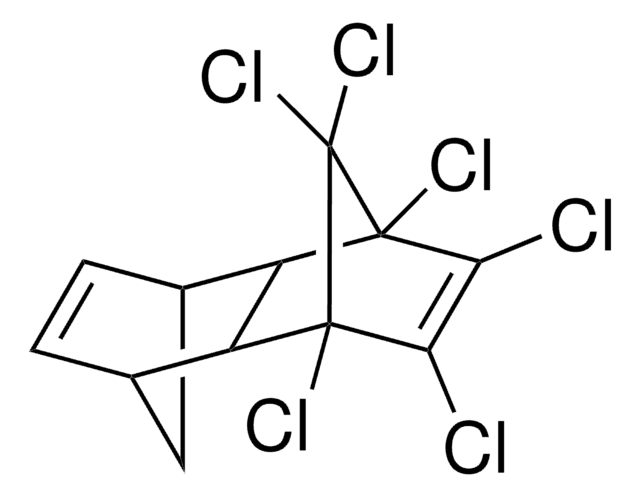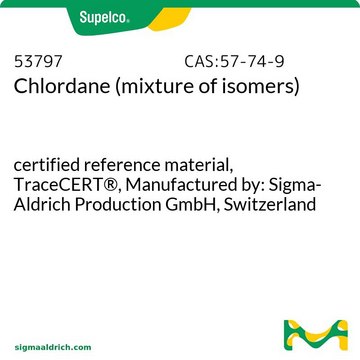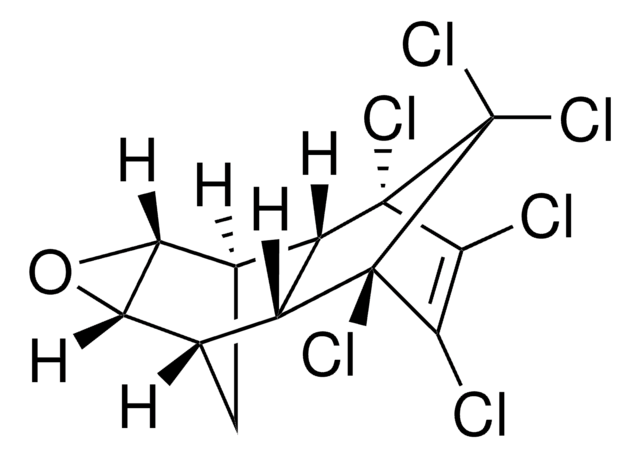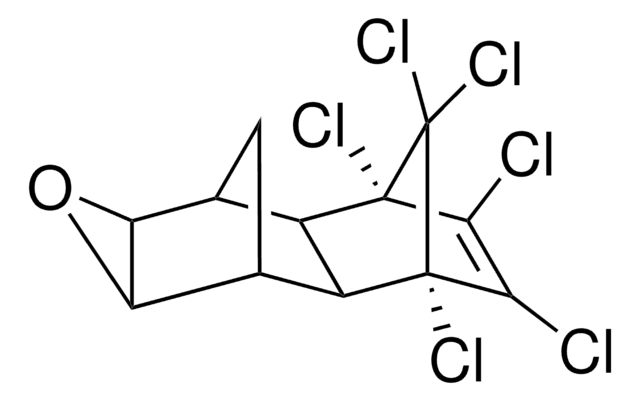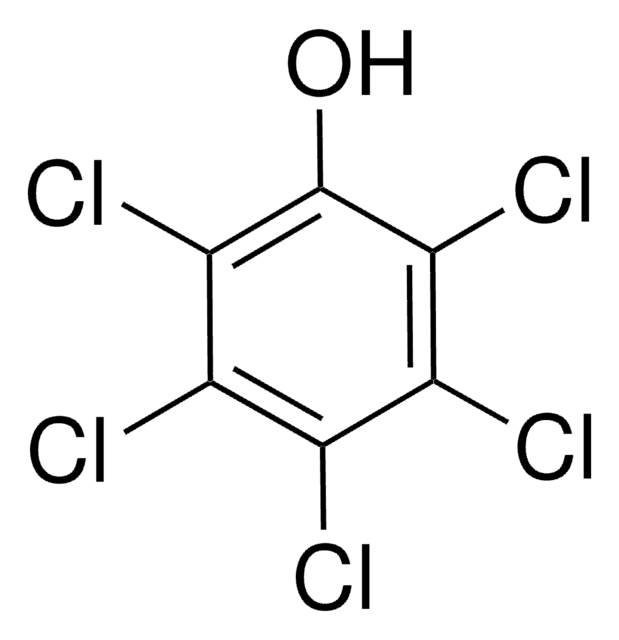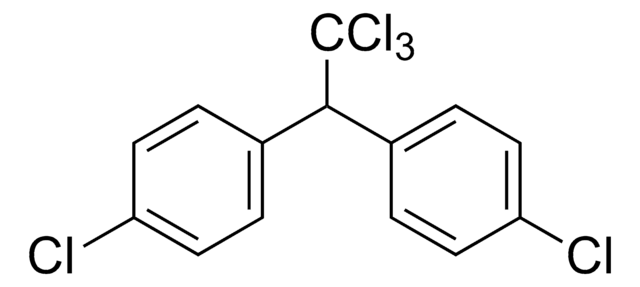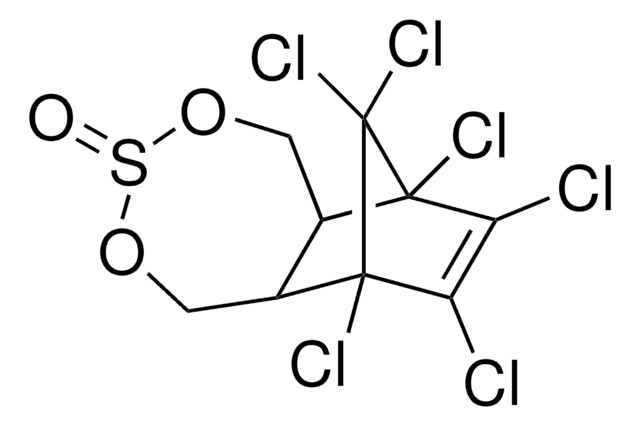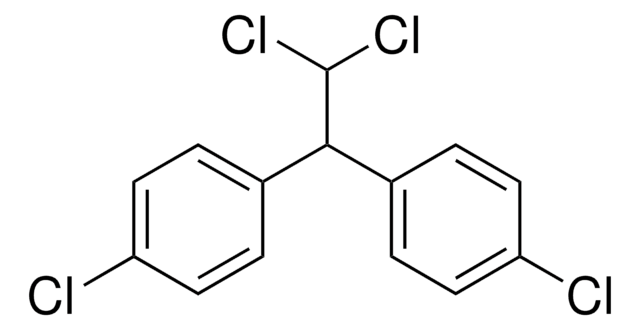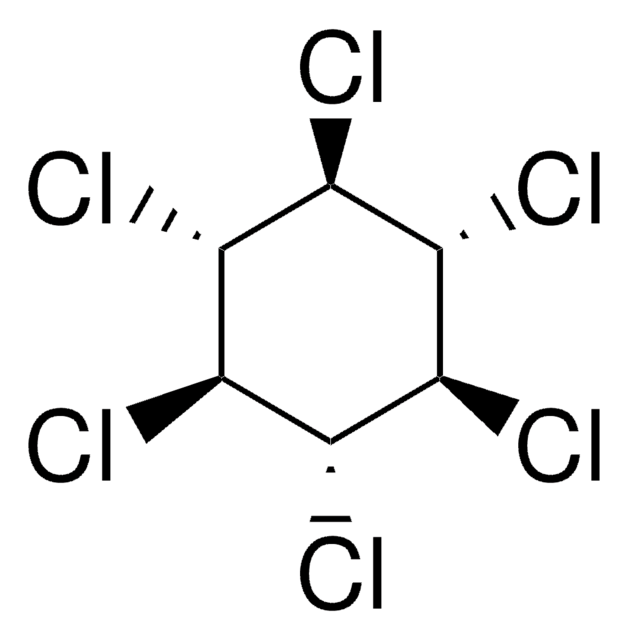About This Item
おすすめの製品
グレード
analytical standard
品質水準
製品種目
PESTANAL®
シェルフライフ
limited shelf life, expiry date on the label
濃度
100 μg/mL in acetonitrile
テクニック
HPLC: suitable
gas chromatography (GC): suitable
アプリケーション
agriculture
cleaning products
cosmetics
environmental
food and beverages
personal care
フォーマット
single component solution
保管温度
2-8°C
SMILES記法
ClC1=C(Cl)[C@]2(Cl)[C@@H]3[C@@H]4C[C@@H](C=C4)[C@@H]3[C@@]1(Cl)C2(Cl)Cl
InChI
1S/C12H8Cl6/c13-8-9(14)11(16)7-5-2-1-4(3-5)6(7)10(8,15)12(11,17)18/h1-2,4-7H,3H2/t4-,5+,6+,7-,10+,11-
InChI Key
QBYJBZPUGVGKQQ-SJJAEHHWSA-N
類似した製品をお探しですか? 訪問 製品比較ガイド
関連するカテゴリー
詳細
アプリケーション
法的情報
シグナルワード
Danger
危険有害性の分類
Acute Tox. 4 Dermal - Acute Tox. 4 Inhalation - Acute Tox. 4 Oral - Aquatic Chronic 3 - Eye Irrit. 2 - Flam. Liq. 2
保管分類コード
3 - Flammable liquids
WGK
WGK 2
引火点(°F)
42.8 °F - closed cup
引火点(℃)
6.0 °C - closed cup
個人用保護具 (PPE)
Eyeshields, Faceshields, Gloves, type ABEK (EN14387) respirator filter
適用法令
試験研究用途を考慮した関連法令を主に挙げております。化学物質以外については、一部の情報のみ提供しています。 製品を安全かつ合法的に使用することは、使用者の義務です。最新情報により修正される場合があります。WEBの反映には時間を要することがあるため、適宜SDSをご参照ください。
毒物及び劇物取締法
劇物
消防法
第4類:引火性液体
第一石油類
危険等級II
水溶性液体
労働安全衛生法名称等を表示すべき危険物及び有害物
名称等を表示すべき危険物及び有害物
労働安全衛生法名称等を通知すべき危険物及び有害物
名称等を通知すべき危険物及び有害物
Jan Code
36664-VAR:
36664-1ML:4548173262567
36664-10ML:4548173905600
36664-BULK:
36664-2ML:4548173905617
プロトコル
US EPA Method 8081: GC Analysis of Organochlorine Pesticides on Equity®-5
ライフサイエンス、有機合成、材料科学、クロマトグラフィー、分析など、あらゆる分野の研究に経験のあるメンバーがおります。.
製品に関するお問い合わせはこちら(テクニカルサービス)